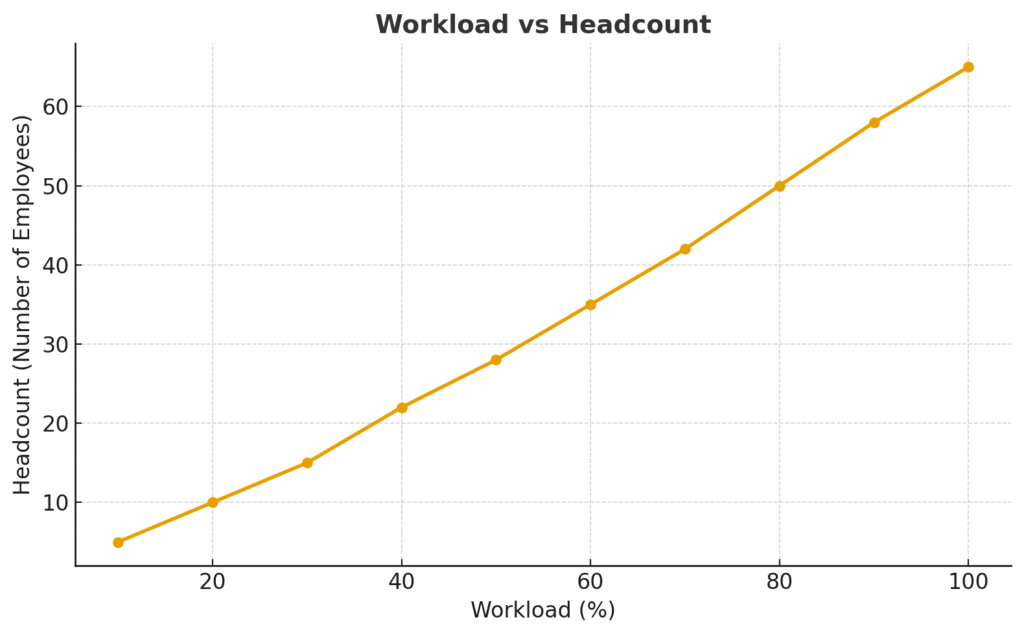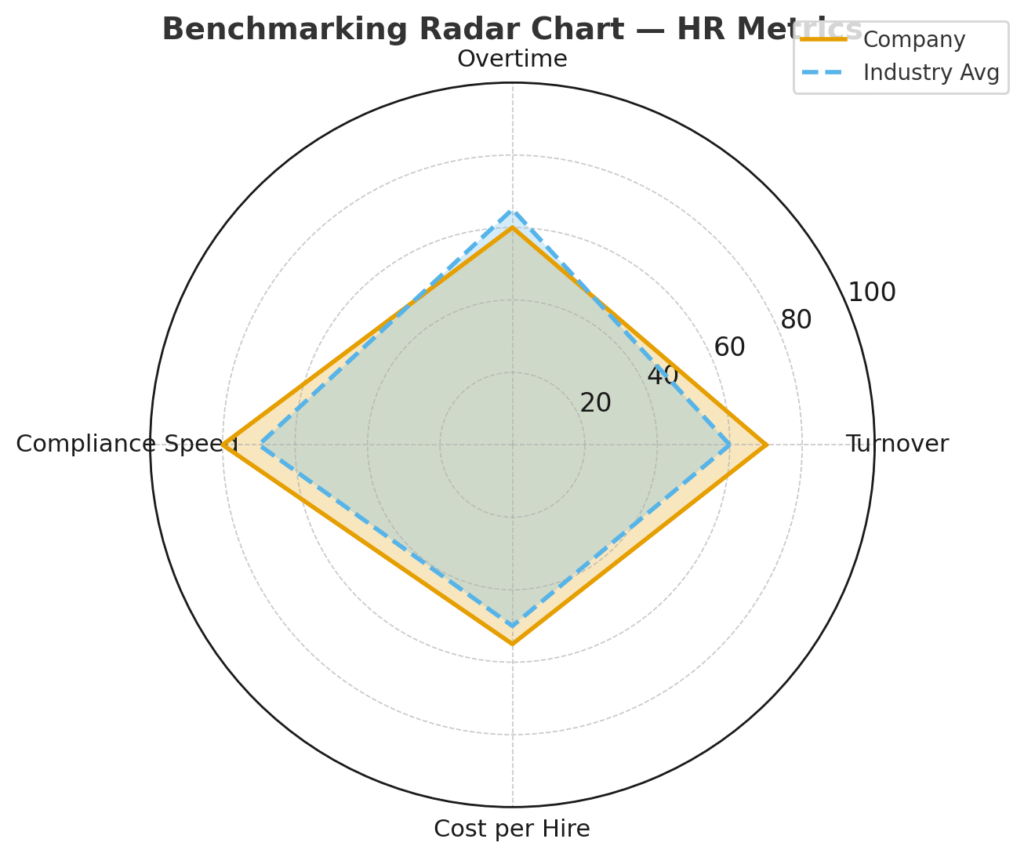Staffing Needs Calculation Primer
An essential dilemma for a developing establishment is determining the right approach to calculate staffing needs. How to calculate staffing needs is about getting the right people with the right skills on the organizational objectives and at the same time ensuring efficient operations. Companies that miscalculate the labor force necessary may either waste resources by being overstaffed or suffer from burnout, high turnover rates, and less productive work by being understaffed. Labor planning, employee forecasting, and the application of the HR industry best practices make companies optimize headcount planning that matches workload analysis and business development.
For a staffing agency startup, this challenge becomes even more complex. In addition to operational efficiency, agencies must consider employment agency regulations, staffing agency licensing, business insurance for staffing agencies, state tax ID for staffing agencies, and workers’ compensation for staffing agencies. They also need staffing agency client contracts, staffing agency employee handbook guidelines, staffing agency occupancy permits, and staffing agency local business registrations to operate legally and effectively. The ability to calculate staffing needs therefore directly connects with compliance and business survival.
The rules of staffing do not only apply to offices or healthcare facilities but also to industries, such as trucking. Think of long-haul trucks moving across the whole country. Just like businesses manage shift scheduling, coverage analysis, and skill gap analysis, fleet managers are required to predict driver availability, plan for seasonal staffing surges, and calculate staff numbers to ensure freight is delivered on time. This example highlights that staffing strategies are universal across industries, not just limited to one type.
What is Workforce Planning & Forecasting?
Important Techniques for Calculation of Staffing Requirements
HR professionals like to use a range of diverse staffing models and techniques to keep resource allocation optimized. Here are a few of the most recognized methods:
How to calculate staffing needs | How to calculate needed capacity
The Rule of Thumb Method
The Rule of Thumb is very simple: the staffing ratios are formulated from historical data, productivity metrics, and the benchmarks of the industry. For example, a retail enterprise would possibly assign one worker for every specific number of customers, whereas a logistics unit might allocate a number of dispatchers for each fleet of semi-trucks. Though it is a quick and easy way of doing things, this technique may be too simplistic and overlook any of the following: changes in workload projections, spikes in demand.


Mega Analysis (Ratio Analysis)
Ratio Analysis is a more mathematical approach. It determines the need for manpower through the correspondence of key output measures, such as sales, service numbers, or workload levels, and the present employee count. A case in point can be a call center that employs one employee per 50 incoming calls. In trucking, headcount optimization may include the computation of the necessary drivers for balanced capacity utilization across various routes at a minimum of extra time. Ratio analysis is very advantageous for allocation of resources since it helps companies create staffing models with objective measurable data.
Delphi Technique
Delphi Technique is a method through the exchange of ideas with people who are knowledgeable via questionnaires that are to be completed and the consensus is reached. The complexities of some industries quite often make it advantageous to cooperative processes in which expert’s opinions define the outcomes. These can be for instance, projects that address labor shortages, new technology, or unstable regulations. HR teams can often apply this approach in demand-supply planning in sectors such as health care, airlines, or logistics, which are strongly supported by a combination of skill gap analysis and workforce analytics.
Staffing Plan Development Steps
Once an organization establishes its mode of operation, it will need to build a staffing plan that is linked with the goals of the organization.
Analyzing the Current Workforce
The staffing planning cycle starts with the realization of what the current workforce is. HR managers also assess the productivity metrics, turnover rates, and capacity utilization. Workforce analytics can identify the necessary changes in headcount whether there are excessive overtime costs or inefficient coverage analysis. This step determines the starting point for staffing strategies.
In staffing agencies, this analysis goes hand in hand with compliance. Federal wage laws, unemployment insurance filing, license renewal requirements, E-Verify requirements, and anti discrimination laws all influence how staffing projections are made. Agencies must also manage state business tax, corporate filing requirements, and prepare documents such as a staffing agency non-disclosure agreement. These are not optional but mandatory layers of HR planning.
Imagining the Future Needs
The next step is the depiction of the future needs that are based on business expansion and workload projections. The demand forecasting tools can calculate the exact number of employees that will be required during the peak times. For instance, seasonal staffing is essential in sectors like retail during peak sales or transportation during agricultural harvests. The increasing demand for drivers and logistics support during freight volumes is also a problem for semi-truck operators, which translates to their need for extra employees. Utilizing the labor forecast, businesses can be effective in the provision of demand spikes while still maintaining operational efficiency.
Doing a Gap Analysis

The next step is a gap analysis, which covers current capacity versus the projected needs analysis. This will involve skill gap analysis, talent acquisition planning, and demand-supply planning. If knowledge is lacking in the respective area, proactive HR planning will ensure that training courses or recruitment campaigns are set up to deal with the mentioned short soul points. In trucking, a realization like this might be adding more drivers capable of handling more specialized freight or it could be also adding dispatchers to have better scheduling.
For staffing agencies, a gap analysis often identifies missing compliance documents like staffing agency client contracts, an updated staffing agency employee handbook, or staffing agency occupancy permits. These act as the backbone of operational readiness, alongside financial safeguards like business insurance for staffing agencies and workers’ compensation for staffing agencies.

The Importance of Benchmarking in Staffing
Benchmarking is a must in any successful HR planning. By directly comparing staffing strategies with those that are in the outside world, organizations will realize if their staffing model is behind or on the competitor’s level. Benchmarking results may also reflect too high overtime costs, unproductive labor needs, or unexpected resource allocation patterns contrary to HR best practices.
A case in point, a trucking firm may check each driver covering a certain distance per shift against the latest industry figures. If these drivers drive extra by a big margin, it is a noticeable sign that more accurate forecast, and coverage analysis is needed. Benchmarking thus ensures workforce planning is not only internally consistent but also competitive.
Staffing agencies benchmark differently: they look at compliance timelines, license renewal requirements, and how quickly their competitors update to federal wage laws or adopt E-Verify requirements. These details directly influence reputation and, ultimately, how does a staffing agency make money.

Final Thoughts
Understanding the methodology to calculate staffing needs is not a one-off exercise but rather a continuous process of demand forecasting, workforce analytics, and organizational development. How to calculate staffing needs ratio analysis to the Delphi Technique – the framework is all-encompassing, and all the components are interlinked and constitutive to a balanced staffing plan. The ark of staffing plan lies in synchronizing staffing, load analysis, demand-supply, and headcount optimization through strategic and equal means for the sustained growth of the business.
Whether in healthcare, retail, or logistics like semi-trucks, it is essential for companies to deal with the staffing projections as seriously as financial planning. By having the correct staffing models in place, the HR planning functions as a high-performance engine, which returns on investment through productivity, operational efficiency and success. For staffing agencies, aligning calculations with employment agency regulations, corporate filing requirements, and state business tax ensures not just efficiency but compliance, making the difference between thriving growth and operational setbacks.

No Responses